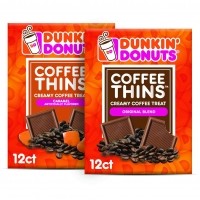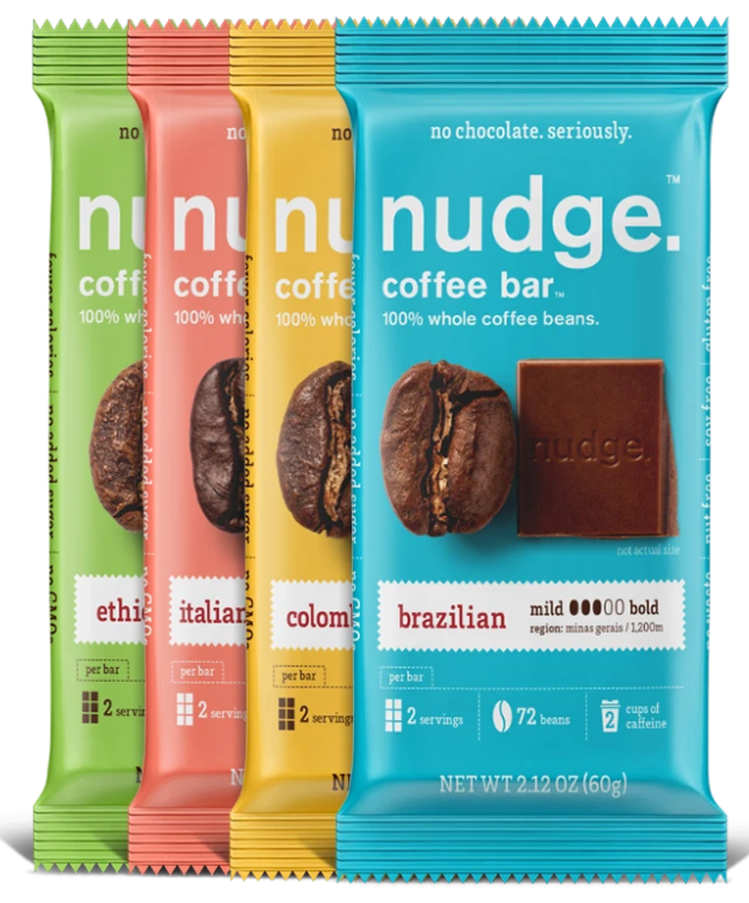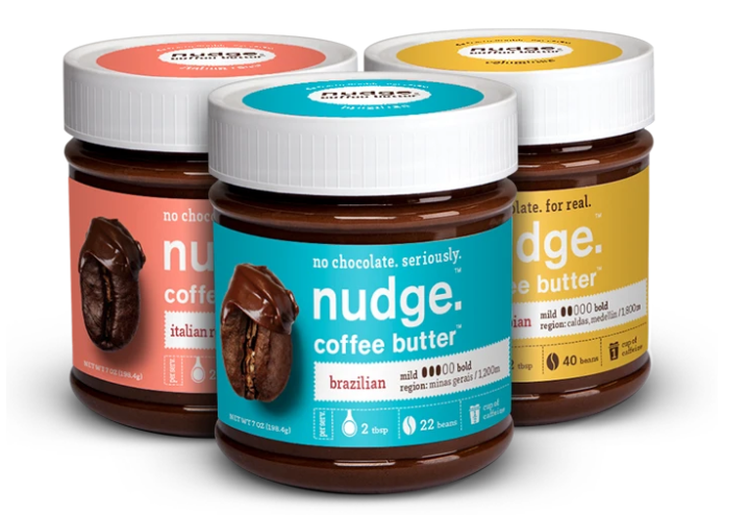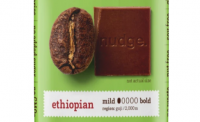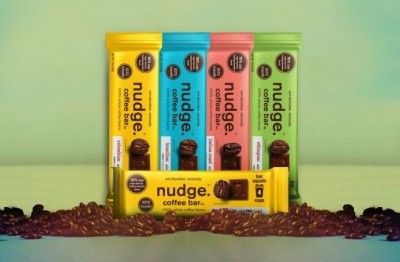Bored of chocolate? Eat coffee instead, says The Whole Coffee Co: 'We're creating a completely new food category'
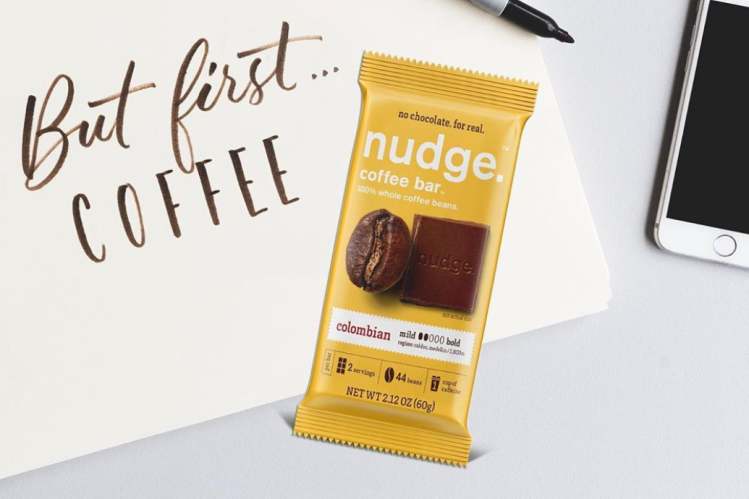
The IP underpinning this transformation is enshrined in a suite of process and equipment patents assigned to Miami-based The Whole Coffee Co, to which Burke was brought in as CEO in May 2018 after the company (a chocolate manufacturer formerly known as Tierra Nueva) was acquired by private equity firm ProspEquity.
According to a patent filed by Tierra Nueva, the firm combines ultra-finely-ground roasted coffee beans with cocoa butter, which encapsulates the roasted coffee particles preserving their aroma and flavor, and tempers (progressively cools and re-heats) them to create a dark, aromatic, shelf-stable ‘whole coffee matter’ with the texture of a thick paste at room temperature that can be molded into bars or formulated into spreads or other products. Along the way there are also multiple steps involving temperature changes that ensure the complex flavors and aromas of the roast coffee beans are retained.
"We can modify the fat system depending on the intended application," explained Dr Giovana Celli, VP, innovation and quality: "We selected cocoa butter for the bars for the mouthfeel it imparts in the product, such as creaminess, similar to a chocolate bar."
The shelf-life is one year post production and the paste does not require any special storage conditions, she told FoodNavigator-USA.
The a-ha moment
“The way I tell the story is that there was a Cuban coffee lover and a Brazilian born food scientist [at chocolate manufacturer Tierra Nueva] with a passion for chocolate, and they came up with this technology for making edible coffee,” said Burke.
“The private equity firm came in thinking about buying a chocolate plant, but then they were like, what’s that you’re working on in the back in that walled-off area? And they said, well we’ve come up with this process of taking a coffee bean, processing it, and turning it into food, but we don’t really know what to do with it… and then the lightbulb went off.”
‘This is going to be a very very big food category in a couple of years’
Burke - a CPG veteran with stints at PepsiCo, Coca-Cola, Primo Water and Red Diamond Tea & Coffee under his belt – was called in to head up the company, which changed its name to The Whole Coffee Company, and focused 100% of its attention into edible coffee, something he believes could create an entirely new category in food spanning multiple aisles in the grocery store.
“We’ve stopping manufacturing chocolate [at the company’s plant in Miami] and we’ve gone full bore into the future with edible coffee. We’re taking something people don’t seem to be able to live without [drinking] and turning it into something you can eat.
“We’re primarily focused on developing products under our own brand [Nudge] but we’ve also partnered with Tim Hortons and Dunkin Donuts to make bars using their coffee beans, and we’re also talking to many other companies including a very large coffee brand in Italy. We could also be a food ingredient in other well known brands.
“We think this is going to be a very very big new food category in a couple of years. The first question buyers ask us is, what else can you do with it?"
Only 20% of the flavors in coffee beans come out in brewed coffee as the rest are not water soluble
But why – apart from the novelty factor – is ‘edible coffee’ so exciting?
The key is the fact that the company is using 100% of the coffee bean, said Dr Celli, who acknowledged that companies making coffee concentrates have explored different ways to preserve more of the aromas or other components in roast and ground coffee over the years.
"The focus has always been on making soluble products by extraction, for example. Little has been done on whole bean technology. Coffee extracts miss a major point – that is, the unveiling of all the new and accretive flavors within the bean that are not soluble in the solvent of choice.
"Our process also retains all the compounds that are lost during extraction/brewing or that don’t make it to the cup (for example, due to the use of filters), including polyphenols, mineral salts, and B vitamins. But to be clear, the width of flavor profile available when the whole bean is unlocked is the primary consumer benefit from our technology."
Burke added: “A coffee bean only unleashes about 20% of the flavors it contains when you drink coffee, because only about 20% of the flavors are water soluble. The rest stay in the coffee bean. In fact there are more than 1,200 flavors in the bean that don’t make it into brewed coffee.”
If you simply smashed up a roasted coffee bean and ate that instead, you still wouldn’t experience many of these flavors, he argued, because the particle sizes are too big for your taste receptors to pick them up.
“When the micron size gets really small, the human tongue can start to pick up all these additional flavors. If you just crush a coffee bean, it’s not great, but the IP and the process we use creates something that tastes very very different.”
He added: “I agree that technology for technology’s sake is just that, but what we found is that we can make products without the fat and sugar of chocolate [although the latter is arguably less to do with the fact that he’s using coffee instead of cocoa beans than the fact he’s using monk fruit and erythritol instead of sugar] and with caffeine [that’s naturally in the coffee beans] that taste incredible."
The target audience
So who’s the target audience – and total addressable market - for coffee bars?
As for the former, there are a couple of large camps, he said: people that love coffee and are looking for another – convenient - way to consume it; and people that are looking for a chocolate alternative. Within the first camp and perhaps beyond it, are people looking for natural energy from caffeine at all times of the day, he added.
“People are trying to get caffeine at every time of day, from coffee first thing in the morning to Diet Coke mid-morning, Mtn Dew in the afternoon, or energy drinks at night if you’re studying or working on something.”
The addressable market
As for the addressable market, as it’s a new category that spans both coffee, confectionery, but potentially many others, it’s hard to pin down at this stage, said Burke, who has just secured approvals at some of the leading names in grocery, drug and convenience channels.
“But we view ourselves more in the coffee space ($74bn in the US) than in confection ($26bn) and coffee is the only food category that’s larger than $50bn and growing faster than the population rate – it’s growing at about 6.5%.”
For the packaging, which highlights the origin (Colombian, Ethiopian, Brazilian) and flavor notes (mild to bold) of the coffee, coupled with the caffeine equivalent (in cups of coffee), he relied on input from consumers.
“We did a ton of consumer research with graduate students and they helped us design the packaging and branding. Show off the bean, explain that it’s not chocolate, but keep it playful. They also liked brand names that were verbs.”
Asked about the audience for the Nudge brand in particular, he said: “Ask me again in three months [once the product is more widely available] but I see the key audience as under 40, slightly more female than male, and physically active.”
